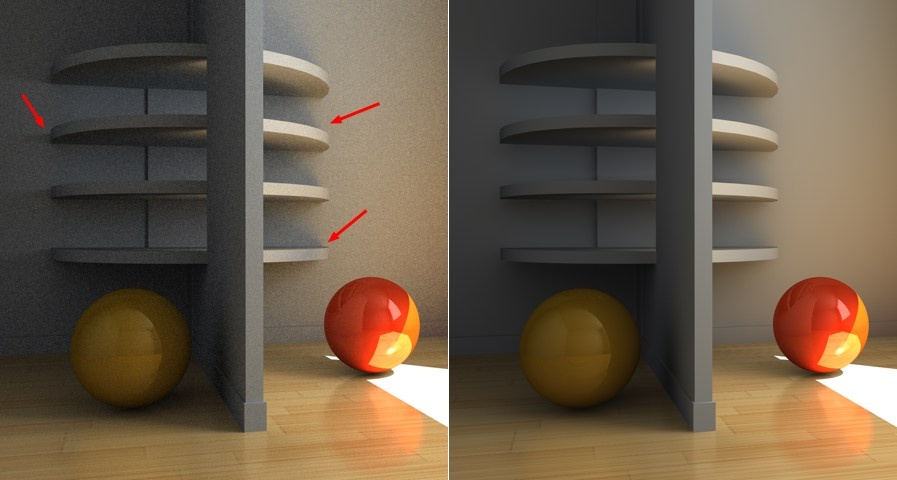

Left, rendered with QMC+QMC, right with IR+IR.
Note the increased level of detail (shadows) in the QMC rendering.
The QMC method of Global Illumination calculation works under a so-called “brute force” principle. This means that, for each object pixel in the image, a definable number of rays (“Sample Count”) can be “beamed” in a hemispherical pattern into the scene. This is not an adaptive process, and render time will definitely not be reduced.
Its advantage is that it offers the most precise render results. Small details in shadows and shading can be rendered out that would otherwise not be noticeable if the IR method were used.
Disadvantages of using QMC as primary method:
•The render times are maxed out (much longer than with Irradiance Cache) and, since brightness and color values based on a finite and randomly distributed number of rays (“Sample Count”) is ascertained for each pixel, the images will have a slight graininess to them that can only be compensated for by increasing the sample count, which in turn increases render time accordingly. Using Polygon Lights/Portals (indoor scenes, primarily illuminated by light falling through windows) can noticeably improve render quality (which also saves render time).
•No caching takes place (as well as no pre-pass calculation). Hence, a lot of CPU power is needed (e.g., render farms) to render animations at an acceptable level of quality.